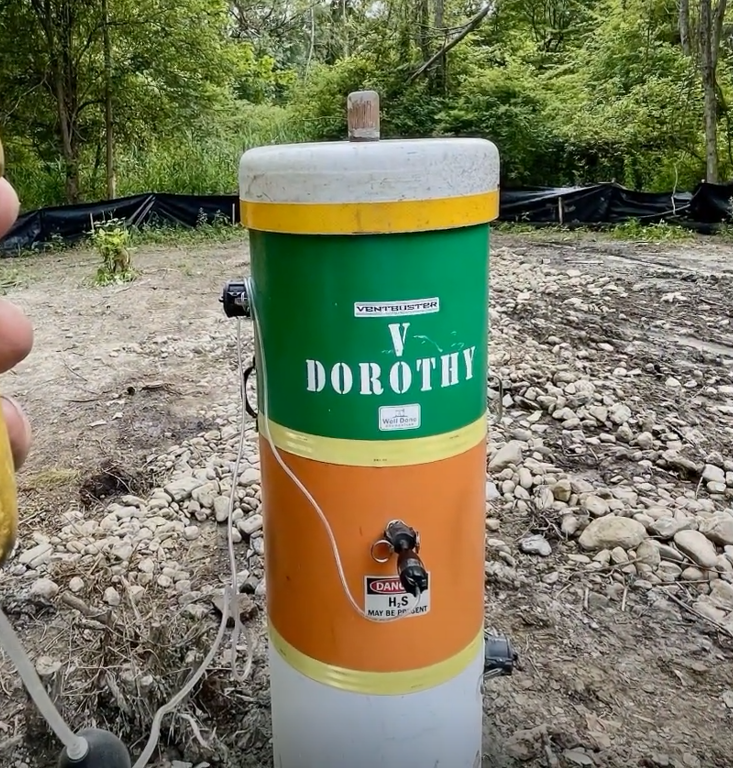MSC members are responsible energy producers, each with a deeply rooted commitment to develop, transport and manage our natural resources safely and efficiently. That commitment extends from pad construction through production, well plugging and site reclamation.
Amid increased focus on plugging long-abandoned wells to address safety and environmental concerns, like reducing methane emissions – particularly as the federal government releases Bipartisan Infrastructure Law (BIL) grants to states – it’s critical to understand the terminology distinctions between inactive, abandoned and orphan wells and the steps MSC’s modern, natural gas producers take to responsibly manage assets.
What’s the Issue?
Unfortunately, some legacy conventional wells that were drilled long-ago (some up to 150 years old) were never properly plugged, have no responsible owner, and represent an environmental and safety concern. They were drilled and operated at a time that predates the enactment of modern oil and gas laws, such as the 1984 Oil and Gas Act and its comprehensive update, Act 13 of 2012. These legacy wells have become the responsibility of states to locate and plug, with modern producers as part of the solution to tackling this challenge. Our members actively identify and proactively plug these wells located near modern well sites. And thanks to Pennsylvania’s unique impact fee levied on unconventional operators, a portion of those revenues also are available for well-plugging efforts.
To further help address the problem, Pennsylvania’s share of the $4.7 billion allocated via the BIL, is targeted directly at finding and plugging these orphan and abandoned wells, with 100 such wells plugged using these federal dollars in 2023 alone.
Understanding Abandoned and Orphan Wells
Under Pennsylvania law, a well is regarded as “abandoned” if it has not produced oil or natural gas for at least a year and has not been granted inactive well status by the PA Department of Environmental Protection (PA DEP). An abandoned well may or may not have an identifiable responsible party that has a legal obligation to plug the well.
An “orphan” well refers to a well which was abandoned prior to April 18, 1985. This date is tied to the effective date of the first modernized well permitting, bonding and plugging standards enacted by the General Assembly in 1984. So, while every ‘orphan well’ is an abandoned well, not every abandoned well is an ‘orphan’ well. The distinction lies in the age of the well and whether a responsible party – or the state – bears the legal obligation to plug the well.
Because there was not a comprehensive well permitting and registration system in place until 1985, it is not uncommon for old wells to be discovered on a routine basis by either operators in the field or landowners walking their property. The PA DEP has identified approximately 30,000 orphan and abandoned wells to date but estimates that there could be as many as 300,000 or more across Pennsylvania. To be clear, no modern, unconventional shale gas wells – which are all permitted, bonded, and have an identified operator responsible for the well – are among these estimated 300,000 orphan and abandoned wells.
Inactive Status
Pennsylvania law requires that any well which has not been used to produce oil or natural gas for 12 months be plugged, or granted ‘inactive’ status by the PA DEP. Inactive status refers to a well which is anticipated to resume or commence oil or natural gas production in the future. During inactive status, operators are responsible for ensuring that the well is maintained at all times in an environmentally-sound manner. These well are bonded and routinely inspected by both the operator and PA DEP. Inactive status may be granted for a period of up to five years and extended on a year-to-year basis if approved by the Department.
There are several reasons why a well might be designated as ‘inactive,’ including:
- Market conditions resulted in it not being advantageous for either the producer or royalty owner to produce natural gas;
- A well or well pad is awaiting construction and connection to gathering lines to transport the natural gas produced to market;
- The well is not fully constructed or stimulated and is not yet capable of producing natural gas.
Misleading Claims from Activists
A recent blog erroneously claimed that in 2023, ten unconventional operators ‘abandoned’ a total of 20 wells; however, a review of the actual compliance history, inspection reports and operator responses to those reports paint a much different and accurate picture. For example, the blog listed alleged violations that, upon review of actual PA DEP records, simply do not exist. Further, several of the wells had inactive status requests which overlapped with the PA DEP’s determination; and a few of the wells identified are already on a plugging schedule, with the PA DEP inspecting the sites and identifying no current environmental concerns.
In fact, of the 20 wells identified in the blog, only one well, which was never brought into production and poses no environmental liability, still awaits a response from the operator regarding its current situation. Nineteen of the wells are either inactive, on a plugging schedule, or were erroneously included on the list as being ‘abandoned’.
MSC’s members take seriously their responsibility for properly managing their wells from site preparation and construction through plugging the well at the end of its useful life. Misinformed and misguided efforts to erroneously cast doubt on this responsibility – and inaccurately suggest unconventional operators are ‘abandoning’ wells – is a disservice to the public.
For more information about well plugging, please click here.





